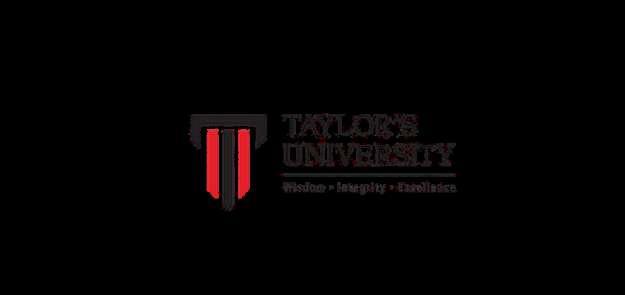

PROFESIONAL PRACTICE
LECTURER:AR.YASMINRAHMAN
By:PatriciaJanice_0345997
TABLE OF CONTENT
ASSIGNMENT1----------LEGISLATIVEANDREGULATIVEDIMENSIONOF
INTERIORDESIGN
1.1 GROUPSTYLESCAPE
1.2 VIDEOSCREENSHOT+QR
1.3EXCERCISE
1.4 REFLECTION
ASSIGNMENT2----------KNOWLEDGEEXCHANCEFORUM+PDW
2.1 FORUMSUMMARY
2.2 PDWSUMMARY
2.3 REFLECTION
ASSIGNMENT3----------FUTUREPRACTICES(FORMATIONOFIDCP)
3.1 GROUPSTYLESCAPE
3.2 VIDEOSCREENSHOT
3.3 REFLECTION
ASSIGNMENT4----------BY-LAWAPPLICATIONANDPREREQUISITESFOR BUILDINGPLANSUBMISSION
4.1 INDIVIDUALSTYLESCAPE
4.2 REFLECTION E-PORTOFOLIOSUBMISSION-ISSULINK
INTRODUCTION
ASGN 1
LEGISLATIVE AND REGULATIVE DIMENSION OF INTERIOR DESIGN
ASGN 2
ASGN 3
ASGN 4
This assignment introduces the standard of Professional Conduct and Practice, aiming to outline the general conduct and self-discipline expected of Interior Designers registered with the Board of Architects (Lembaga Arkitek Malaysia). Students must refer to documents closely related to the legal and regulatory framework in practice, such as the Architects Act 1967, Architects Rules 1996, Uniform Building By-Laws 1984,PAM/MIIDContract,andotherrelevantregulatoryprovisions.Bythe end of this exercise, students will engage in knowledge transfer among their peers to understand, question, and eventually apply these standardsintheirindividualprojects.
ISSU





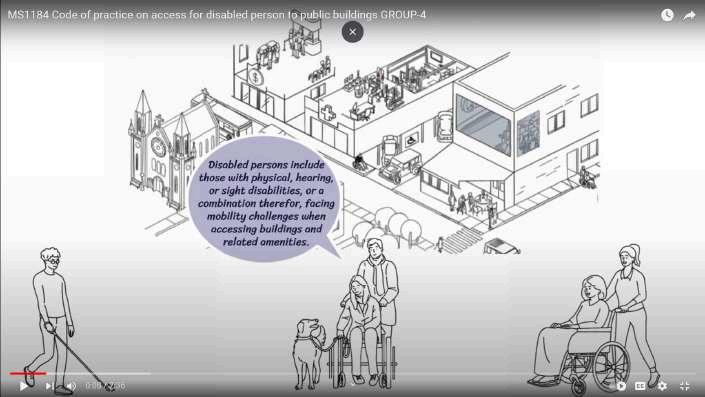
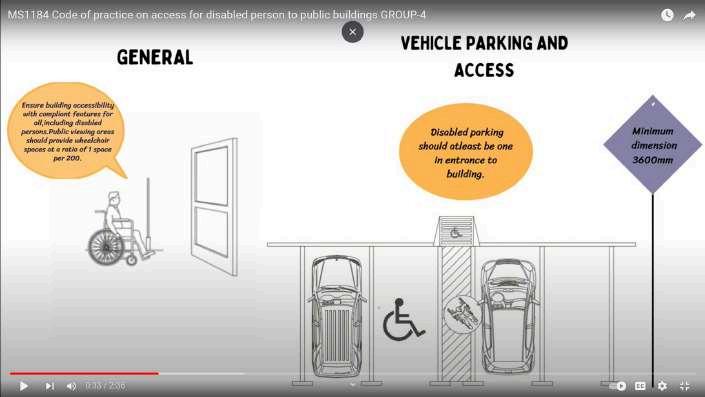
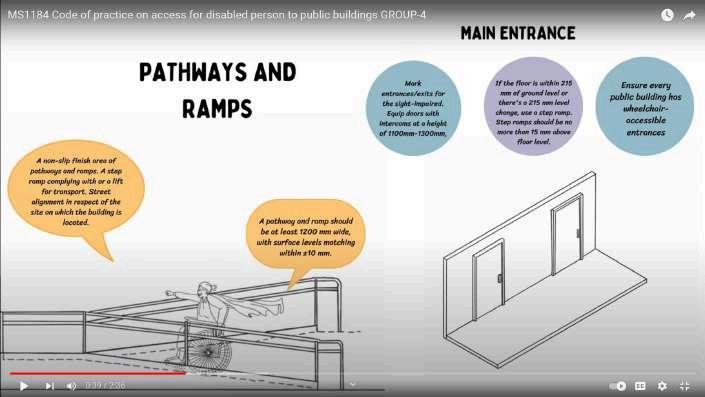
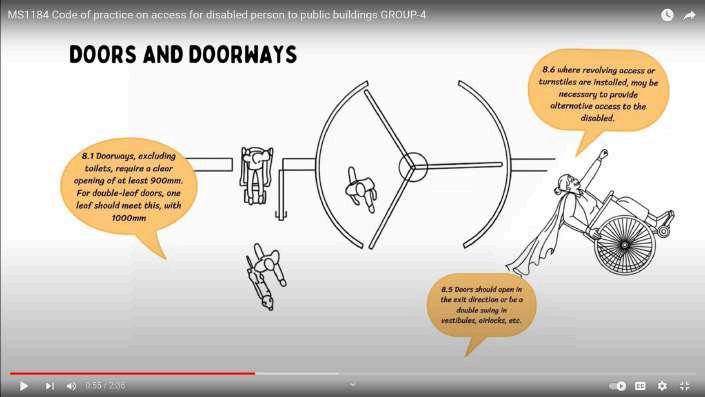
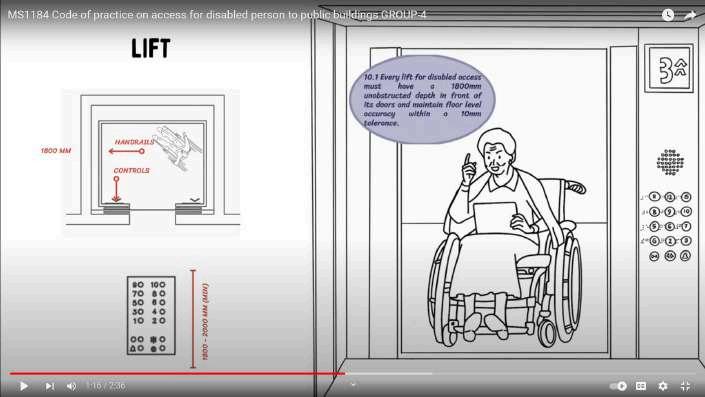
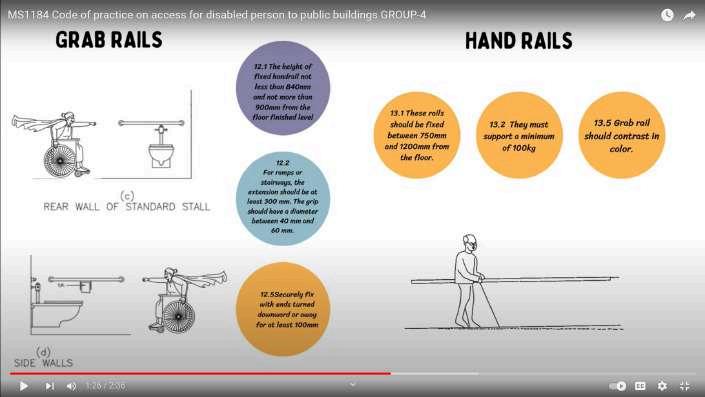
VIDEO SCREENSHOT
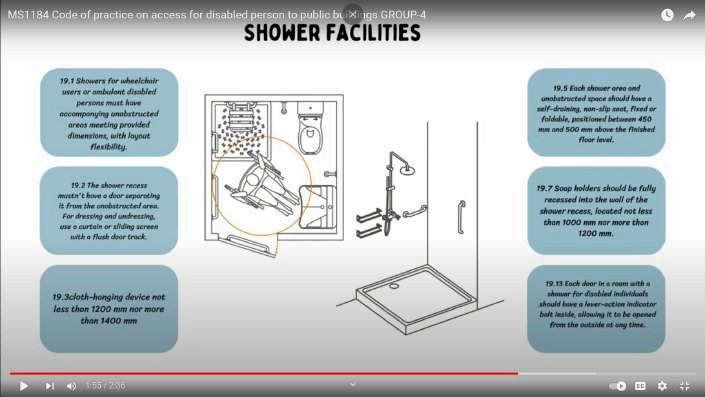
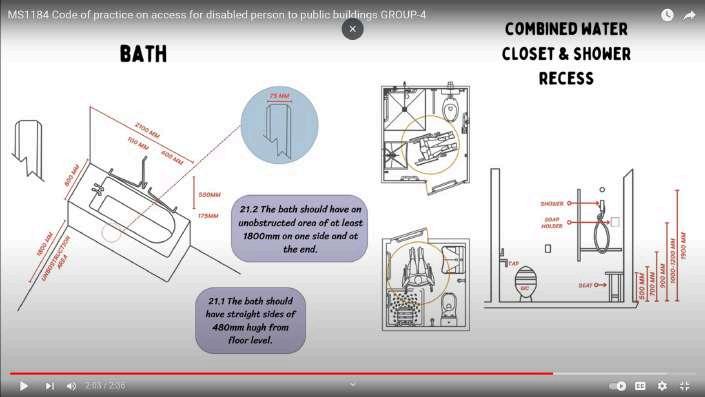
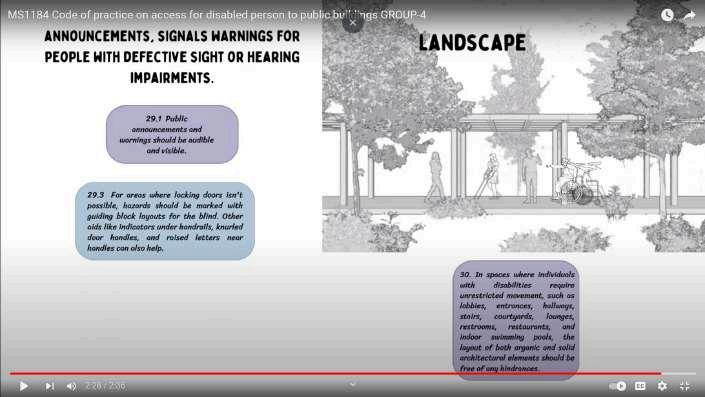
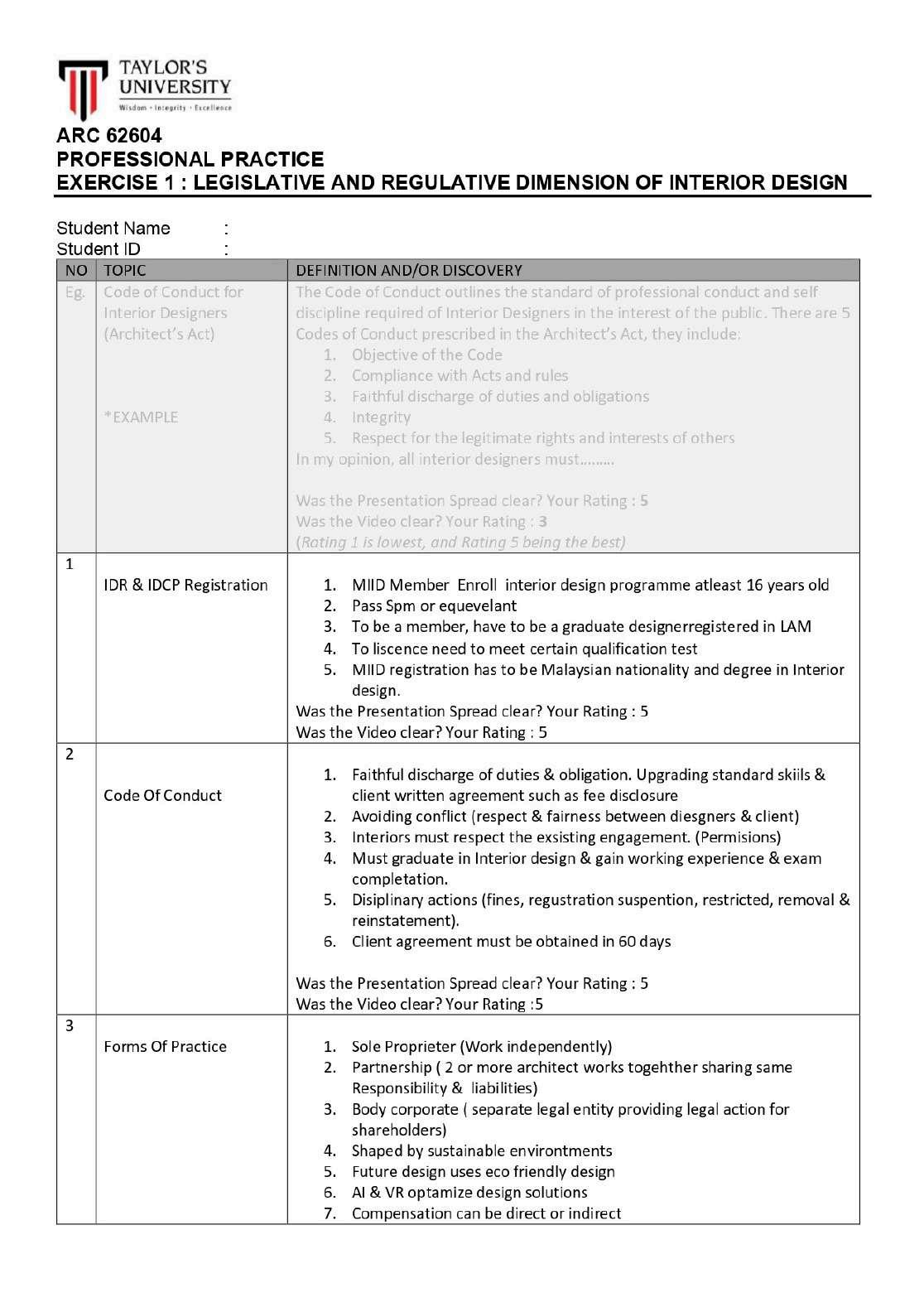
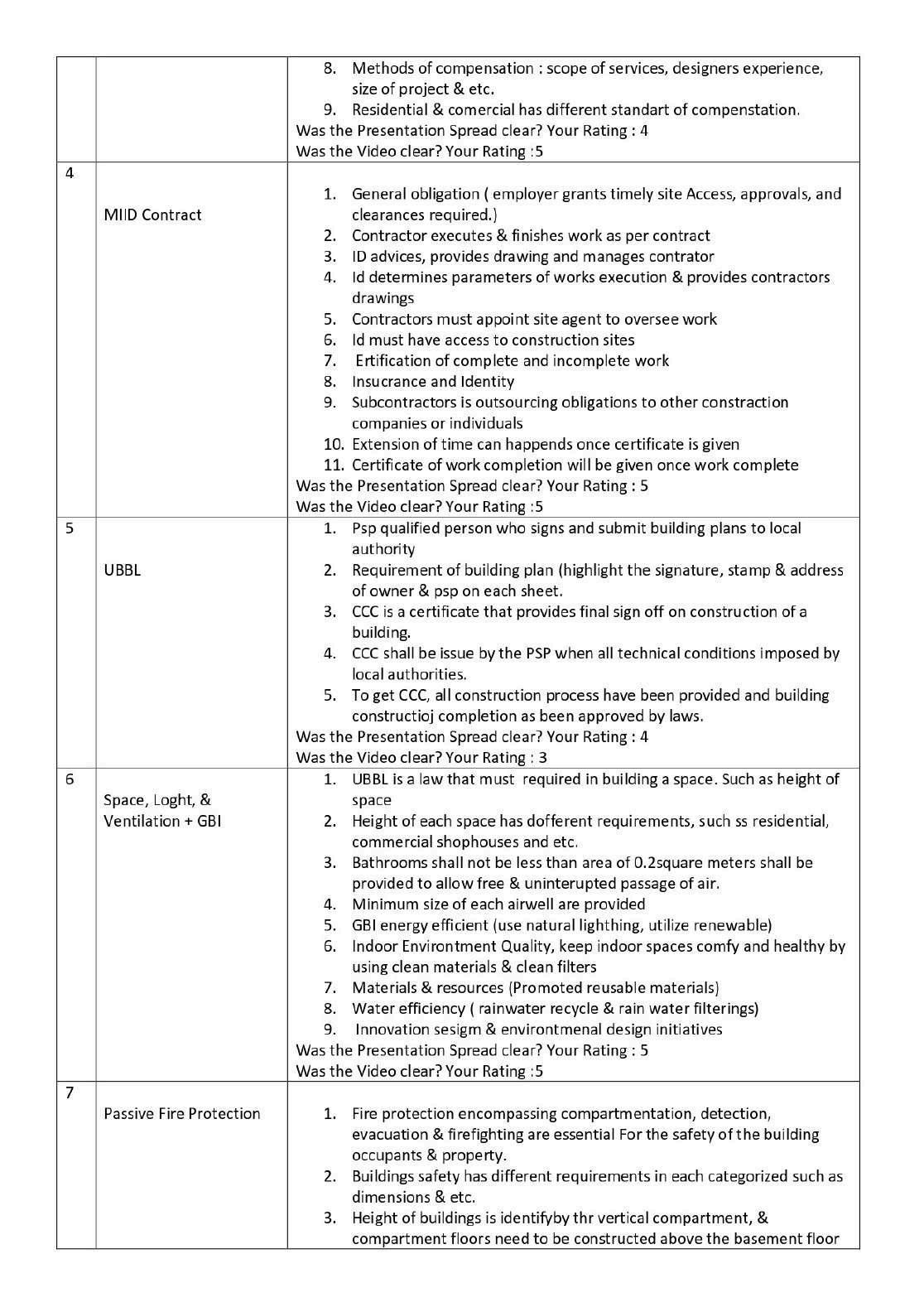
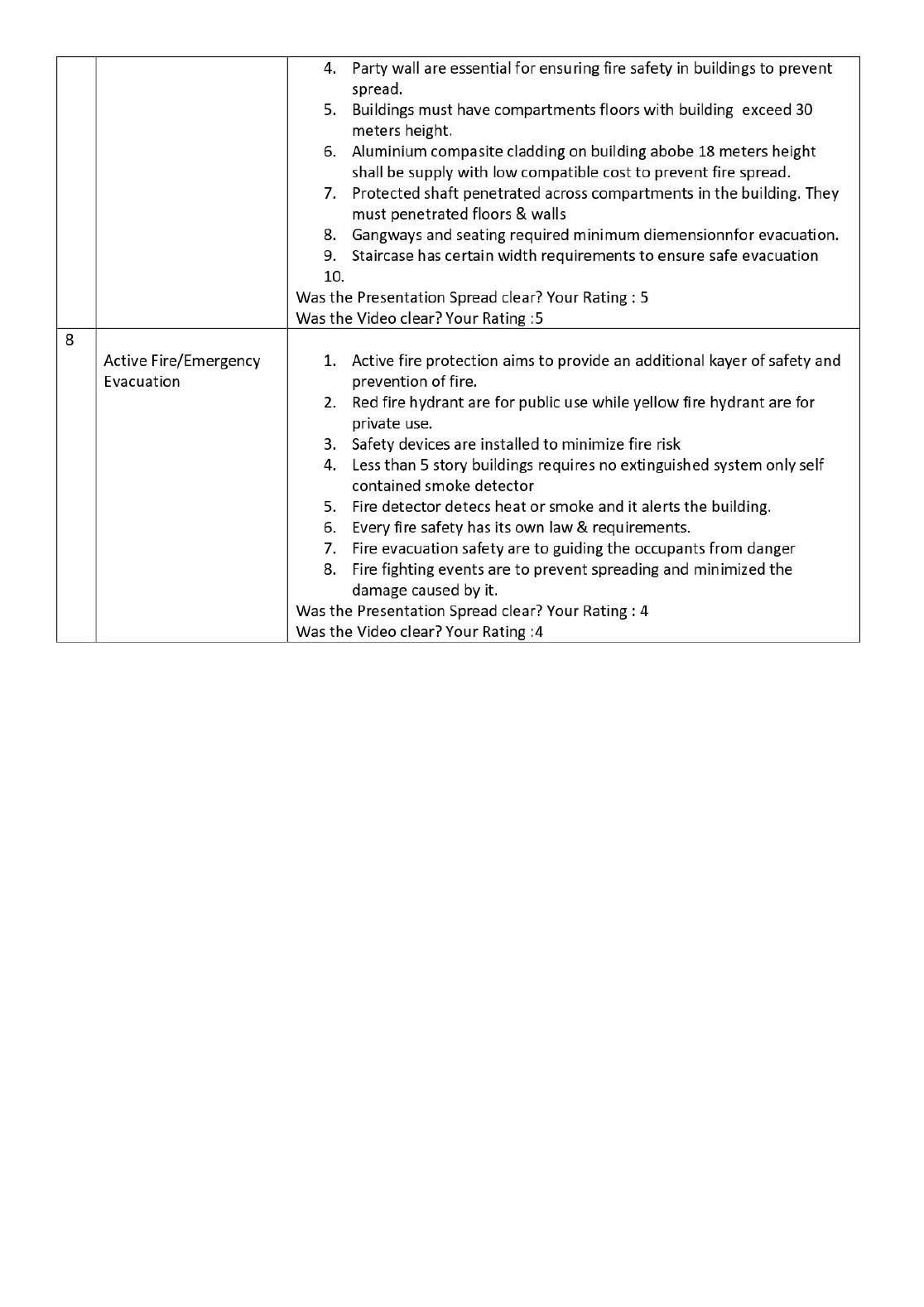
ASSIGNMENT 1 REFLECTION
Introducing the standard of professional conduct and practice has enlightened me about the specific requirements and considerations for disabled individuals, as outlined in MS 1184. Although I was aware that disabled persons have unique ways to navigate buildings, I had not fully grasped the extent to which laws and general conduct guide this process. This assignment has been instrumental in teaching me the importance of adhering to MS 1184 when designing spaces. I now understand the critical need to ensure that spaces are designed to facilitate smooth and easy navigation for disabled individuals, making them feel more comfortable and included. This newfound awareness will significantly influence my approach to design, ensuring that I prioritizeaccessibilityandinclusivityinallmyfutureprojects.Byapplying these principles, I aim to create spaces that are not only functional but alsowelcomingandaccommodatingforeveryone.
INTRODUCTION
ASGN 1
KNOWLEDGE EXCHANGE + PDW
ASGN 2
ASGN 3
ASGN 4
This task aims to foster democratic exchanges by ensuring that each student's voice is heard in the online forum, accessible to anyone who reads their comments. Through this platform, students will experience personal and academic growth by communicating with their peers. The goal is for students to engage in professional interchange and seek out ideas among their colleagues through electronic communication, therebyfacilitatingthelearningprocess.
During Week 8, student must participate in Professional Development Week (PDW) by attending at least six seminars (to be confirmed). At the end of PDW, you must submit a summary or reflection of our personal thoughts on the selected seminars, including text and images/screenshots. Each summary should be no more than 500 words and be done separately for each workshop, clearly naming each topic. ThesubmissionshouldbeinA4size.
ISSU
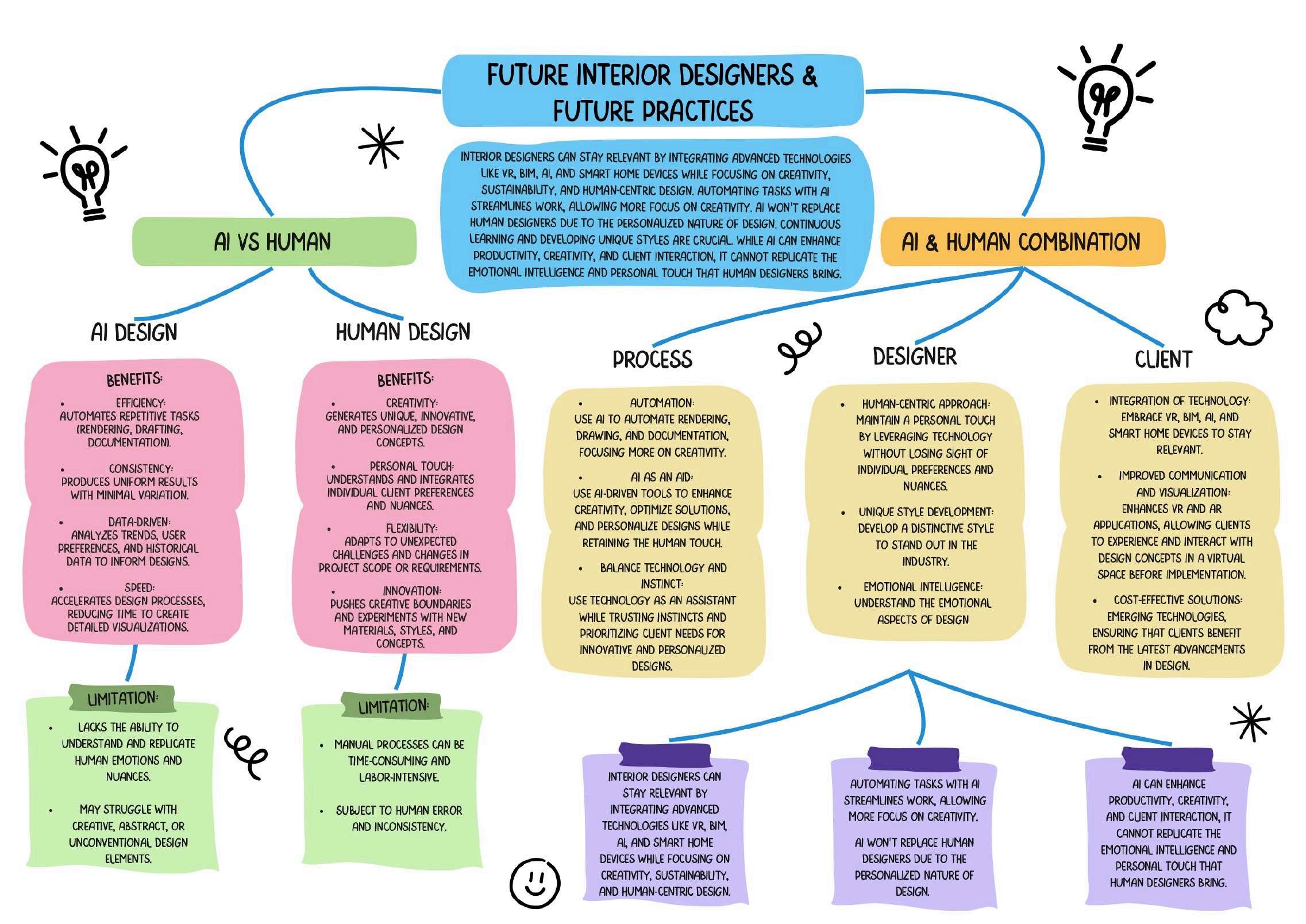
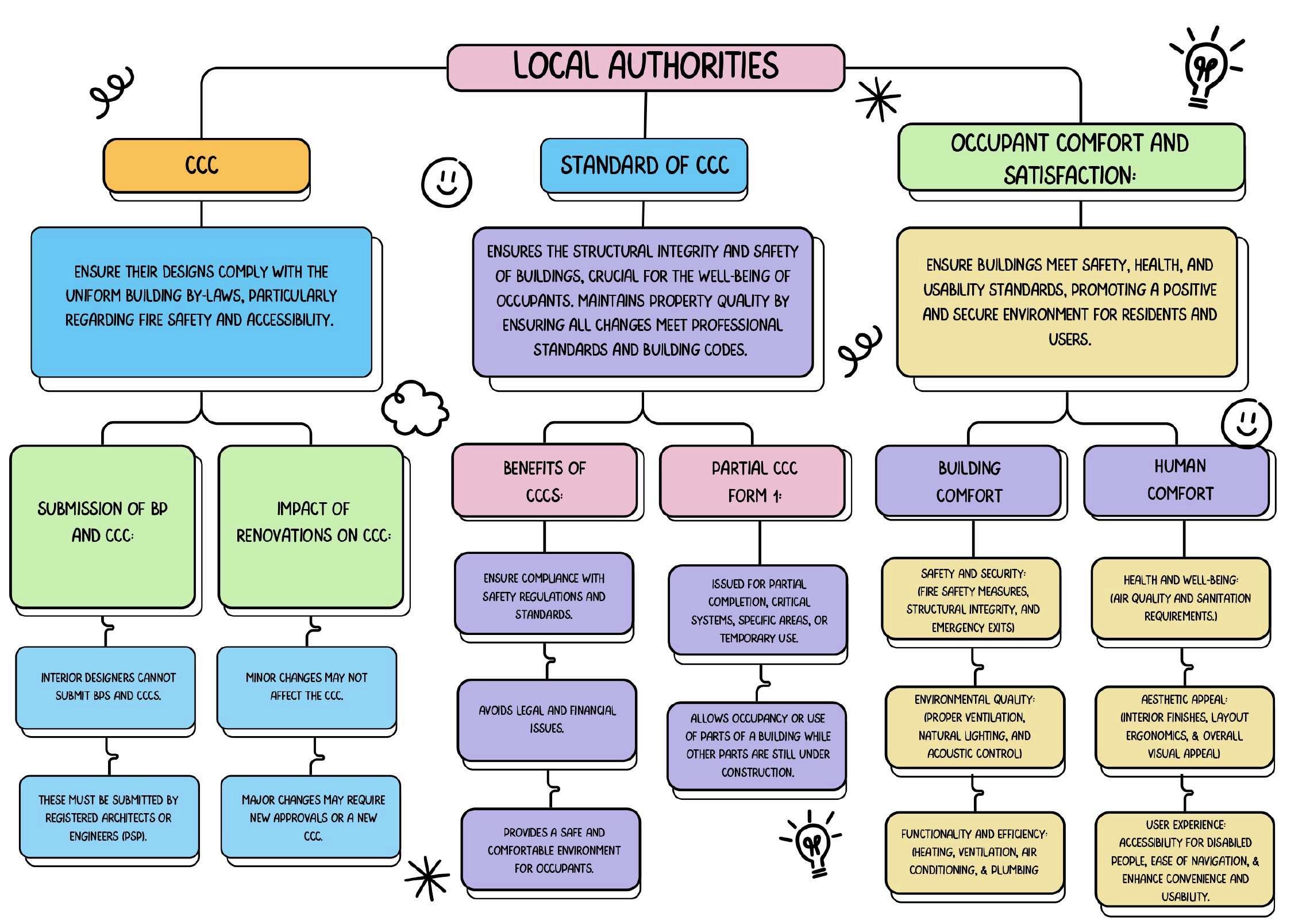
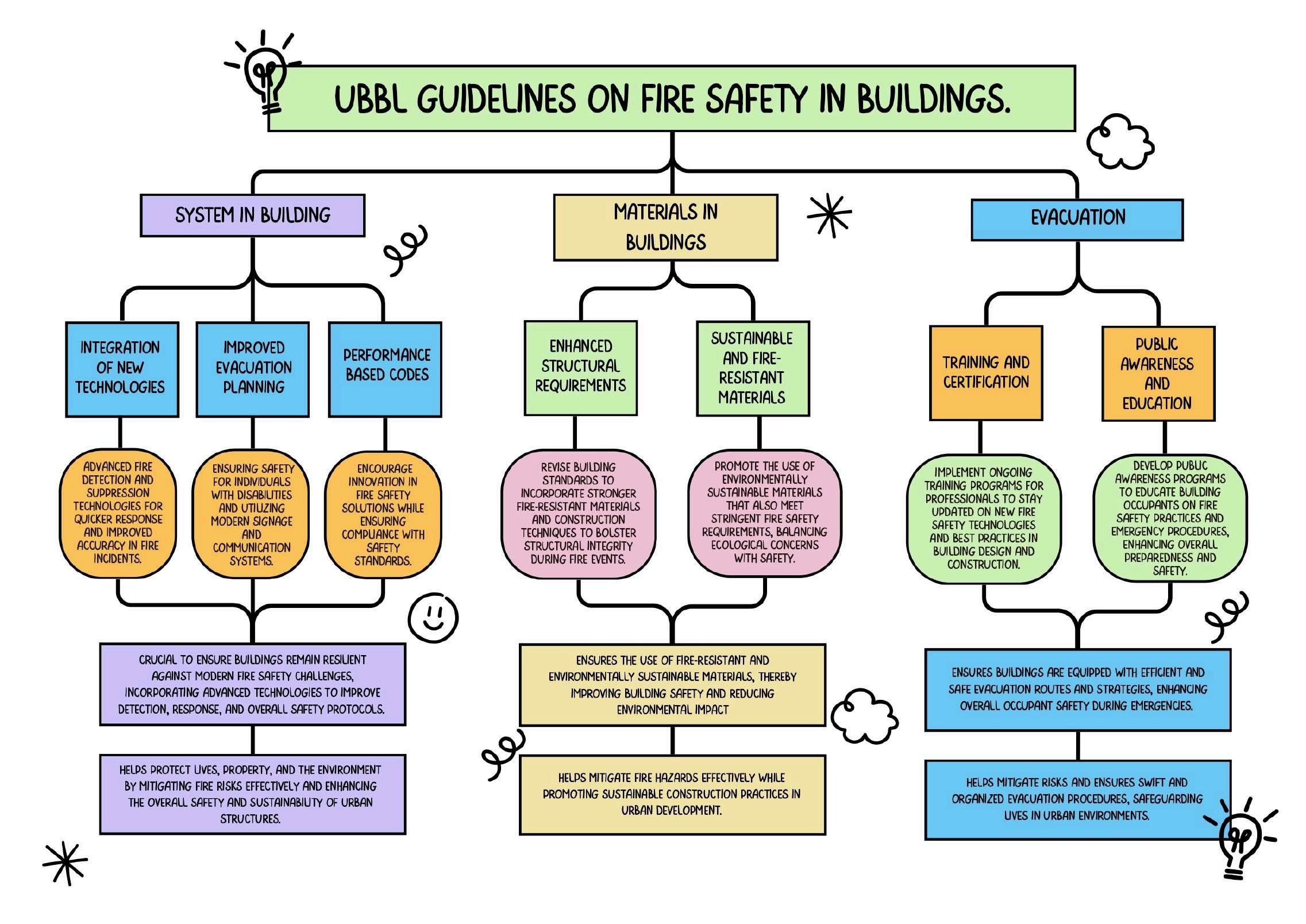
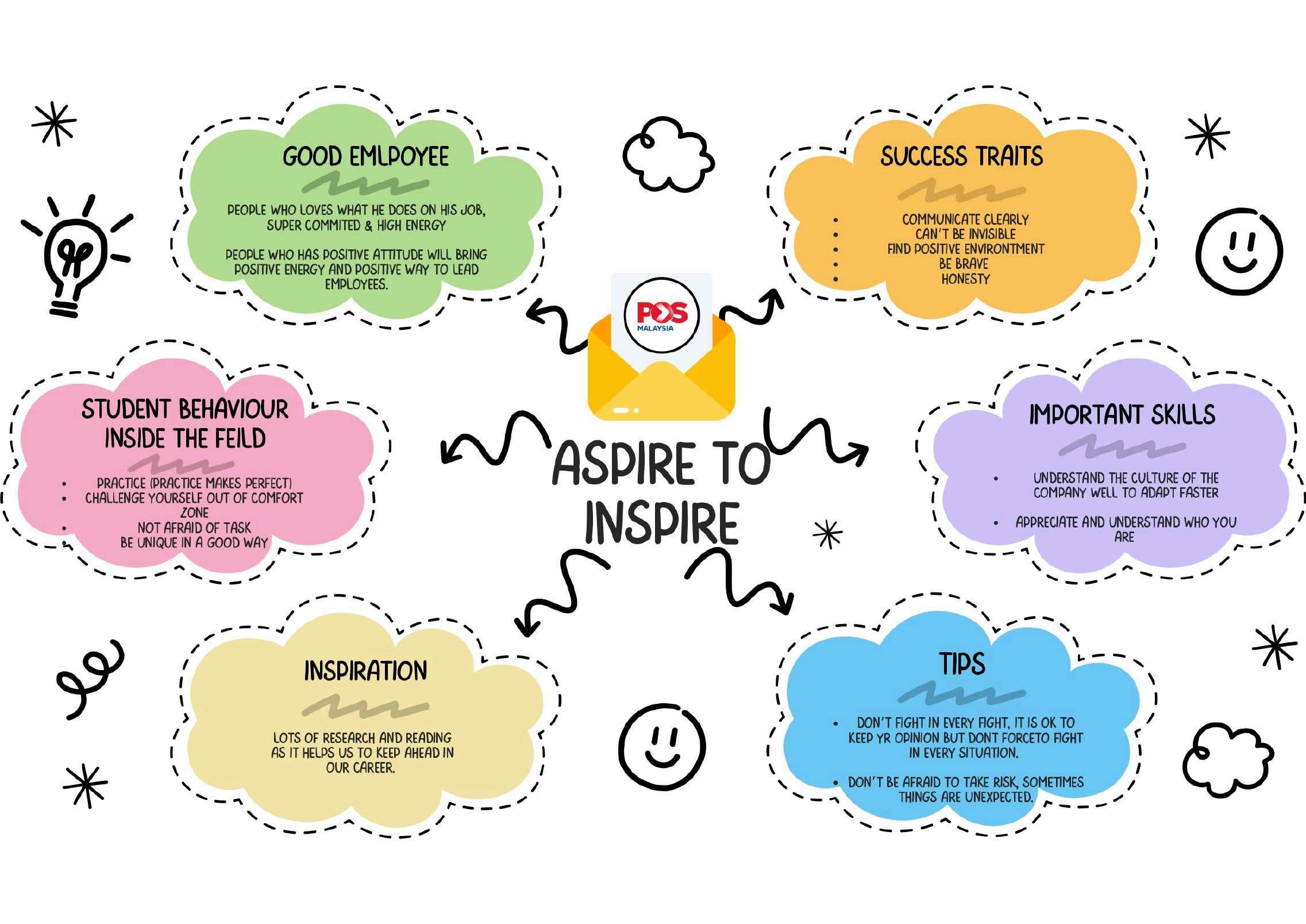
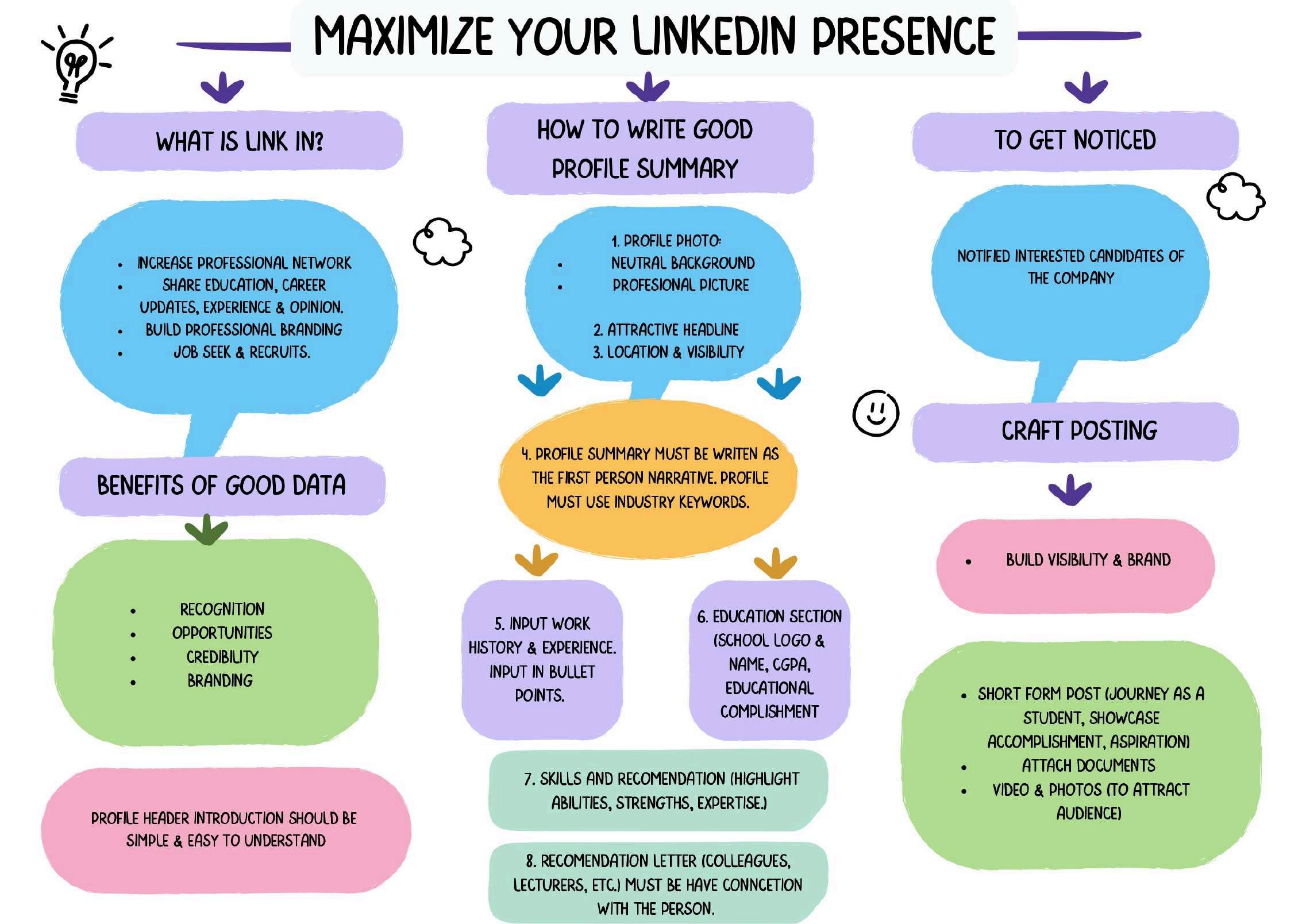
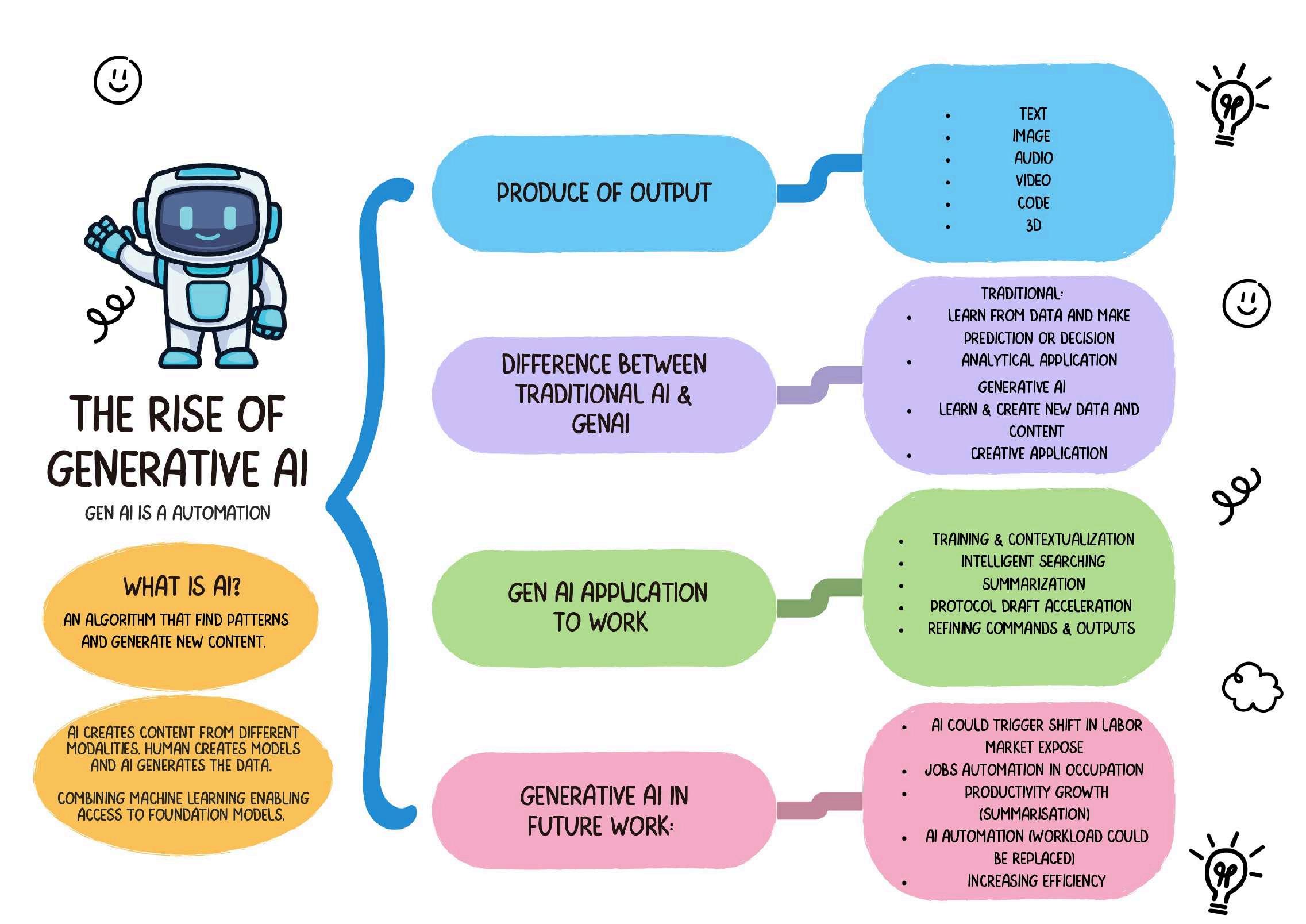
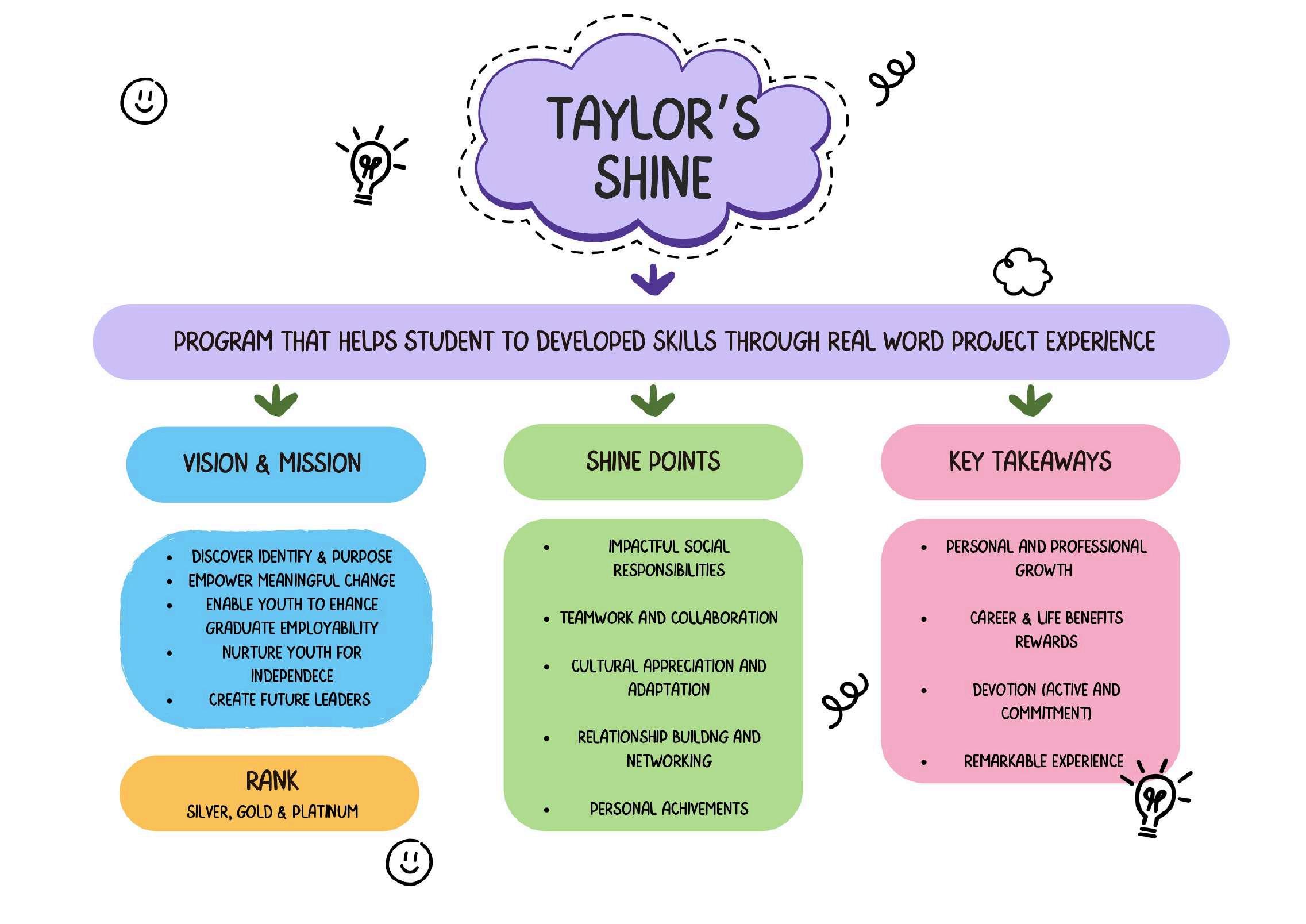
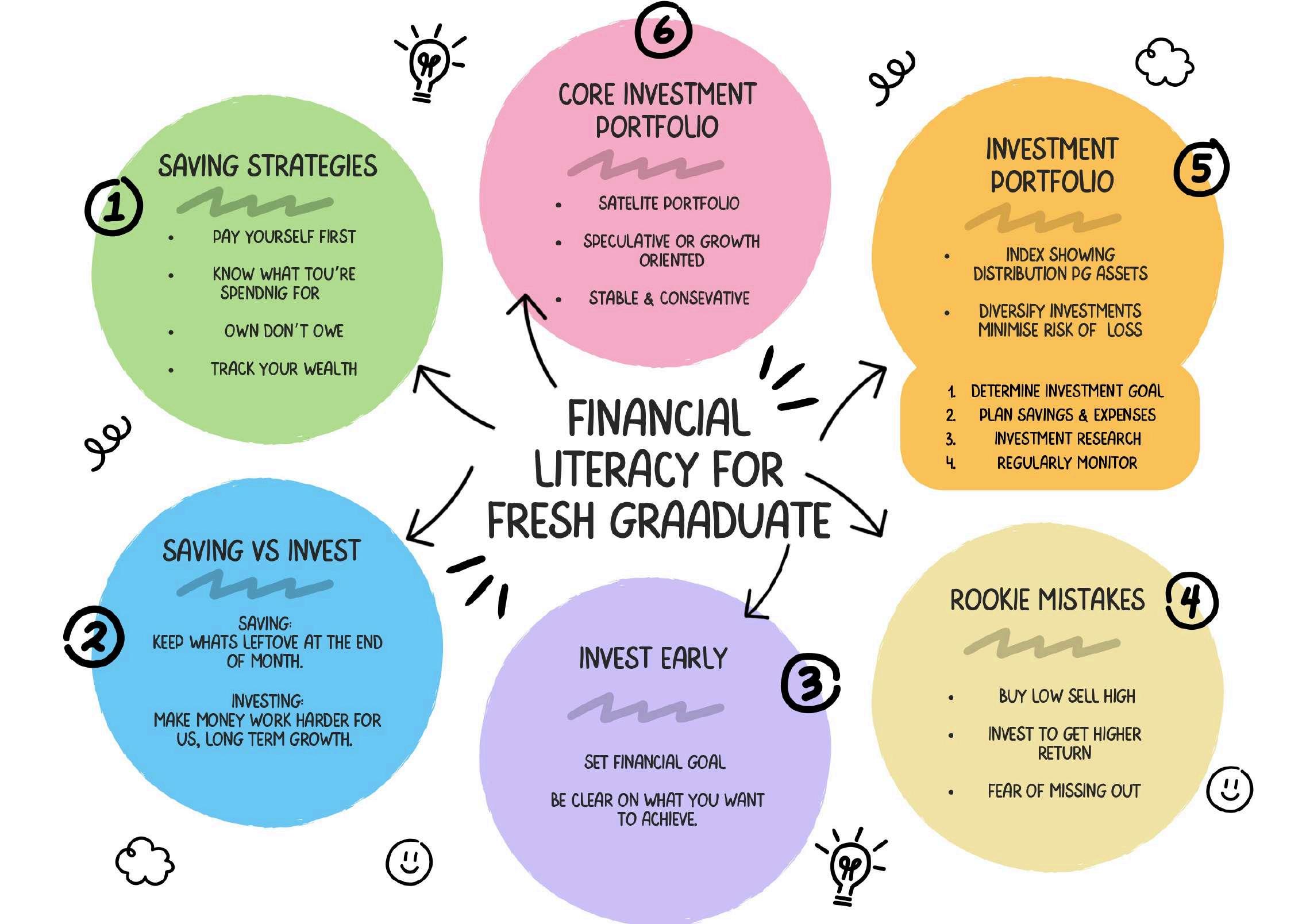
ASSIGNMENT 2 REFLECTION
Through all three forums, I have gained valuable insights from perspectives that may never have occurred to me before. The class discussions have been instrumental in broadening my understandingbyexposingmetodifferentviewpoints.Learningfrommypeers'opinions,questions, and perspectives has heightened my awareness and deepened my knowledge on various topics. Additionally, some students' questions prompted me to conduct further research, which significantly enriched my learning experience. This process of engaging in forum discussions and undertaking my own research has been incredibly enlightening, and I have learned a great deal fromboththeinteractionsandtheindependentexploration.
Attending several workshops over this week has taught me numerous valuable lessons for my future career. I have learned practical skills such as saving money and optimizing my LinkedIn profile.Inmyopinion,manyoftheworkshopswerebothhelpfulandengaging.Thespeakersshared theirpersonalstories,providinguswithvaluableinsightsfromtheirexperiences.Theyalsooffereda wealth of tips and tricks for our future careers, which I found particularly beneficial. Overall, this week has been incredibly informative and inspiring, equipping me with essential knowledge and toolsformyprofessionaljourney.
INTRODUCTION
ASGN 1
FUTURE PRACTICES (FORMATION OF IDCP)
ASGN 2
ASGN 3
ASGN 4
This assignment challenges students to reimagine and reconceptualize theidealarchitecturalpracticeofthefuture.Participantsareencouraged to consider the various challenges that architects and designers often face and to propose innovative solutions and business models. To determinethedesiredbusinesscontext,studentsmustcriticallyevaluate the data obtained in Project 1. Through this process, students will clarify their own vision and mission for forming a design company within the businesscontext.Thisisachievedthroughreflectionontheiractionsand learning,applyingeffectivebusinesspractices.
ISSU





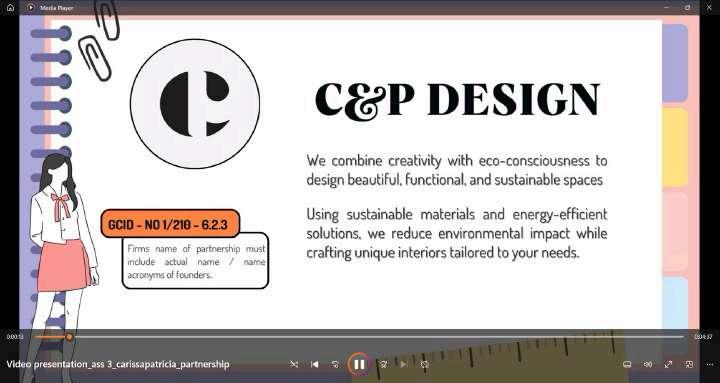
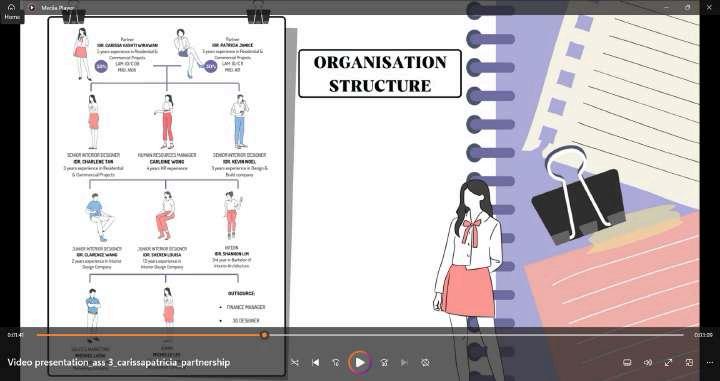
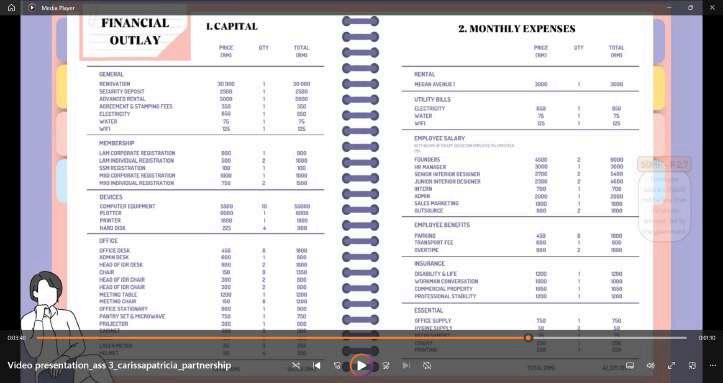
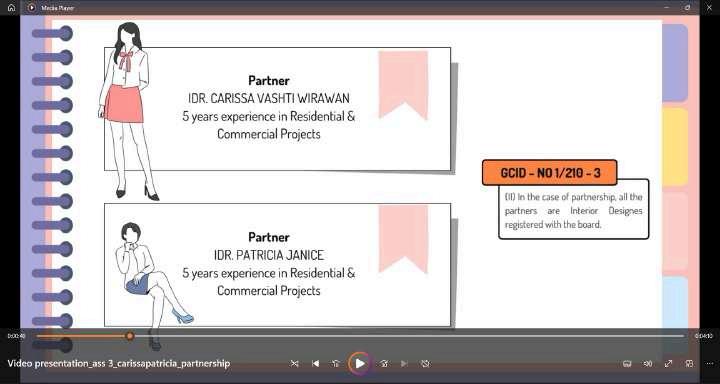
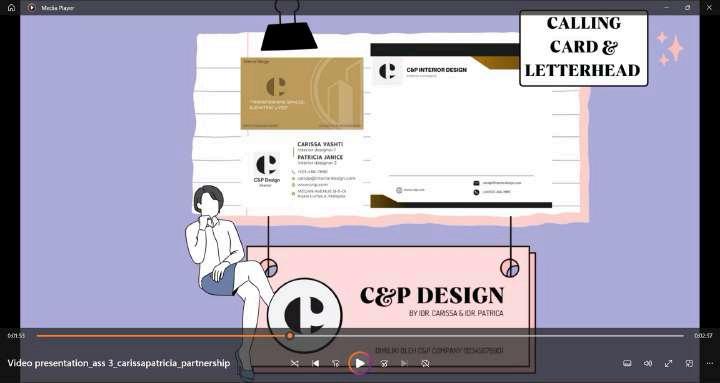
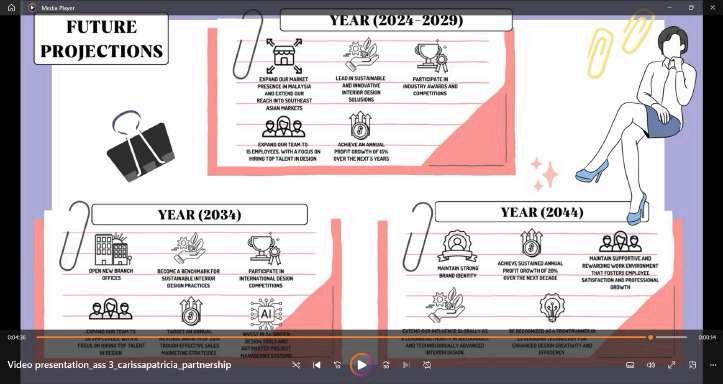
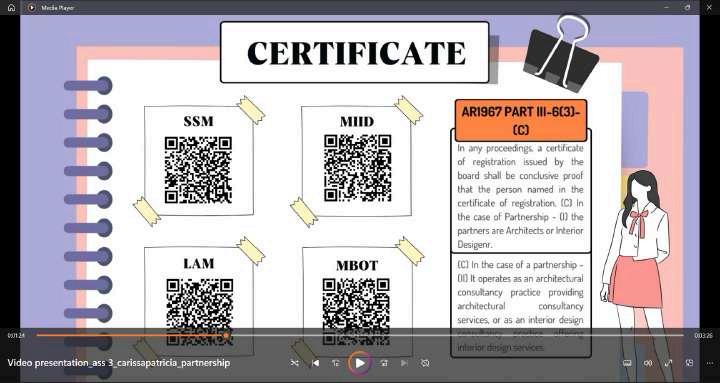
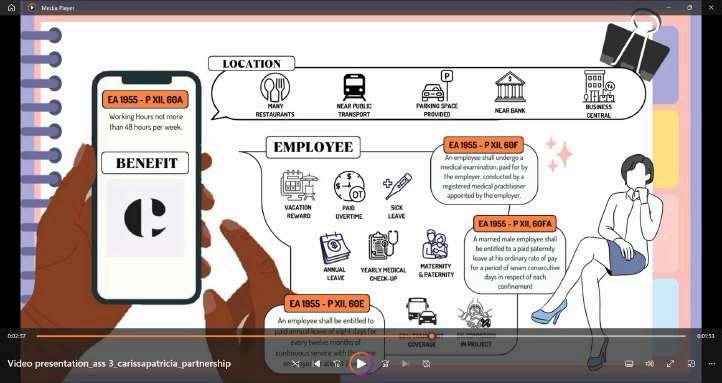
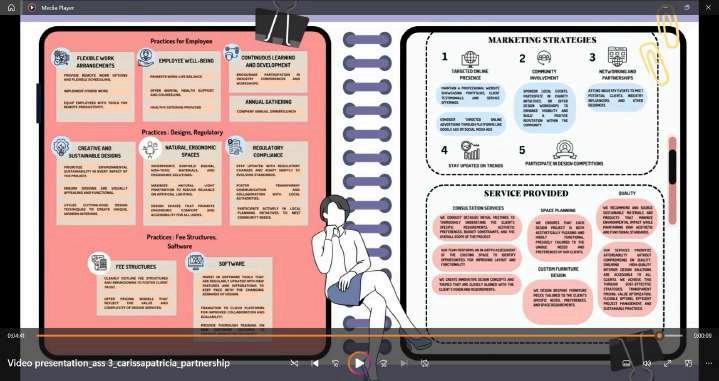
VIDEO SCREENSHOT
ASSIGNMENT 3 REFLECTION
Through this assignment, I have become more aware of how to run a business, particularly regarding the essential codes and regulations required for future business operations as an interior designer. Understanding the specific requirements of professional bodies like LAM and MIID, and recognizing the importance of adhering to their guidelines, has been enlightening. Each procedure comes with its own set of laws and standards that must be followed meticulously. This assignment has not only heightened my awareness of these regulatory frameworks but also emphasized the importance of compliance to ensure ethical and successful business practices. Moreover, this experience has helped me grasp the intricacies involved in setting up and managing a design company, from understanding legal obligations to applying effective business strategies. Overall,Ifeelmorepreparedandconfidentinnavigatingthecomplexitiesof theinteriordesignindustryandrunningacompliantandthrivingbusiness.
INTRODUCTION
BY-LAW APPLICATION AND PREREQUISITES FOR BUILDING

ASGN 4
This assignment enables students to apply the knowledge gained in Project1totheirindividualprojectsinAIAD2.Eachregulatory,legislative, and technical provision must be illustrated in an informative report presentation, including dimensions, drawings (such as isometrics), and materials where necessary. Students will be assessed on their ability to explain and apply this knowledge to their final AIAD2 project. This exercise serves as a working paper for AIAD, ensuring that students' designs are not altered due to time constraints but act as an overall guidelineforthenextstepsbeforefinalizingbuildingplans.Studentsare required to identify non-compliance issues by marking them with an (x) and describing the necessary actions for design rectification. This rigorous process is essential to ensure compliance with the law before submittingthedrawingstotheLocalAuthority.
ISSU





ASSIGNMENT 4 REFLECTION
Through this project, I have gained practical experience in applying general codes to the public building design we developed. This exercise has significantly increased my awareness of the various codes and regulations thatmustbeadheredtoininteriordesign.Ithashighlightedtheimportance of understanding and integrating these codes into our designs to ensure compliance and enhance functionality. The process of evaluating and adjusting our design to meet these requirements has made me more conscious of how to improve both my design and the existing building framework.Inowhaveaclearerunderstandingofhowtocreatespacesthat not only adhere to legal standards but also contribute to a better and more compliant environment. This experience has underscored the critical role of regulatory codes in shaping effective and legally compliant interior design solutions.
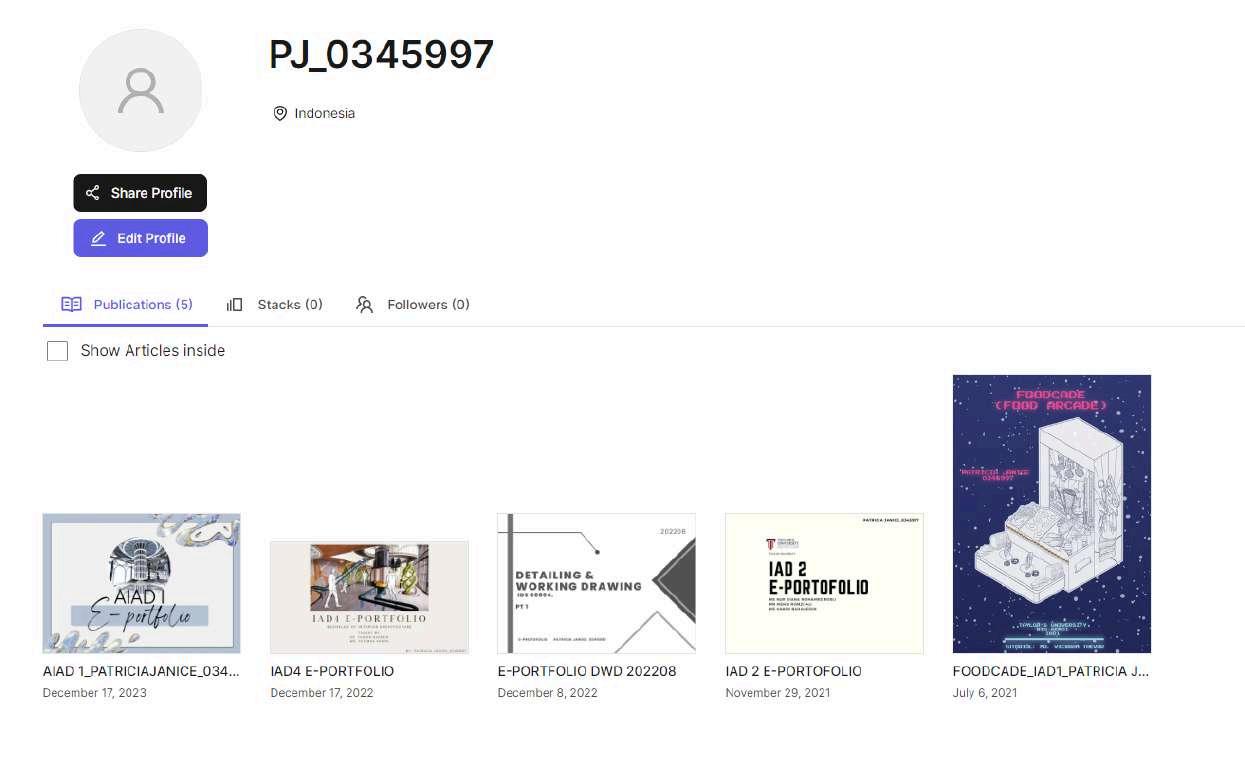
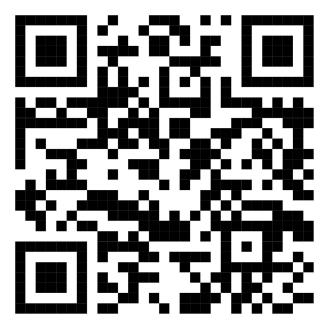
https://issuu.com/pj_0345997
